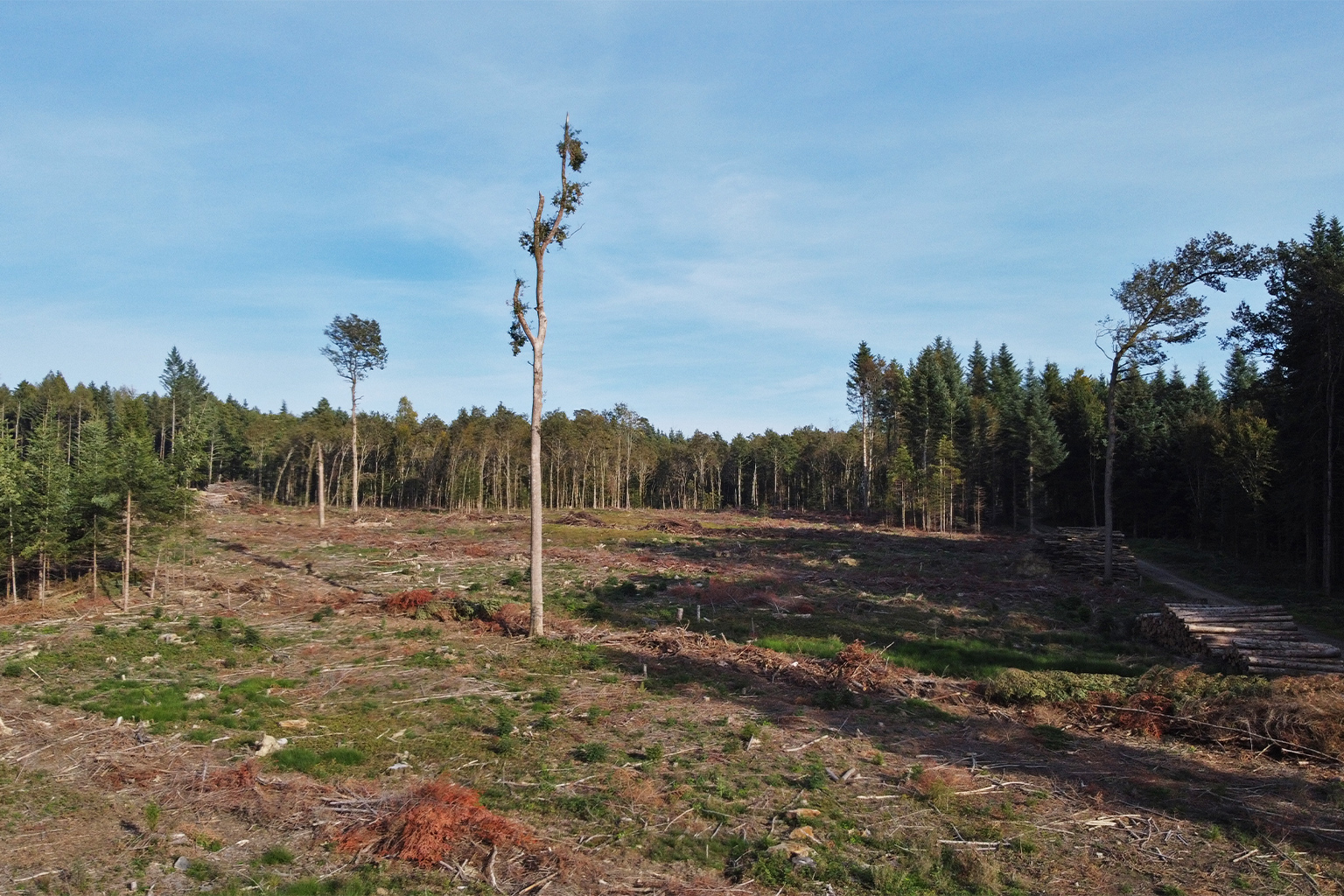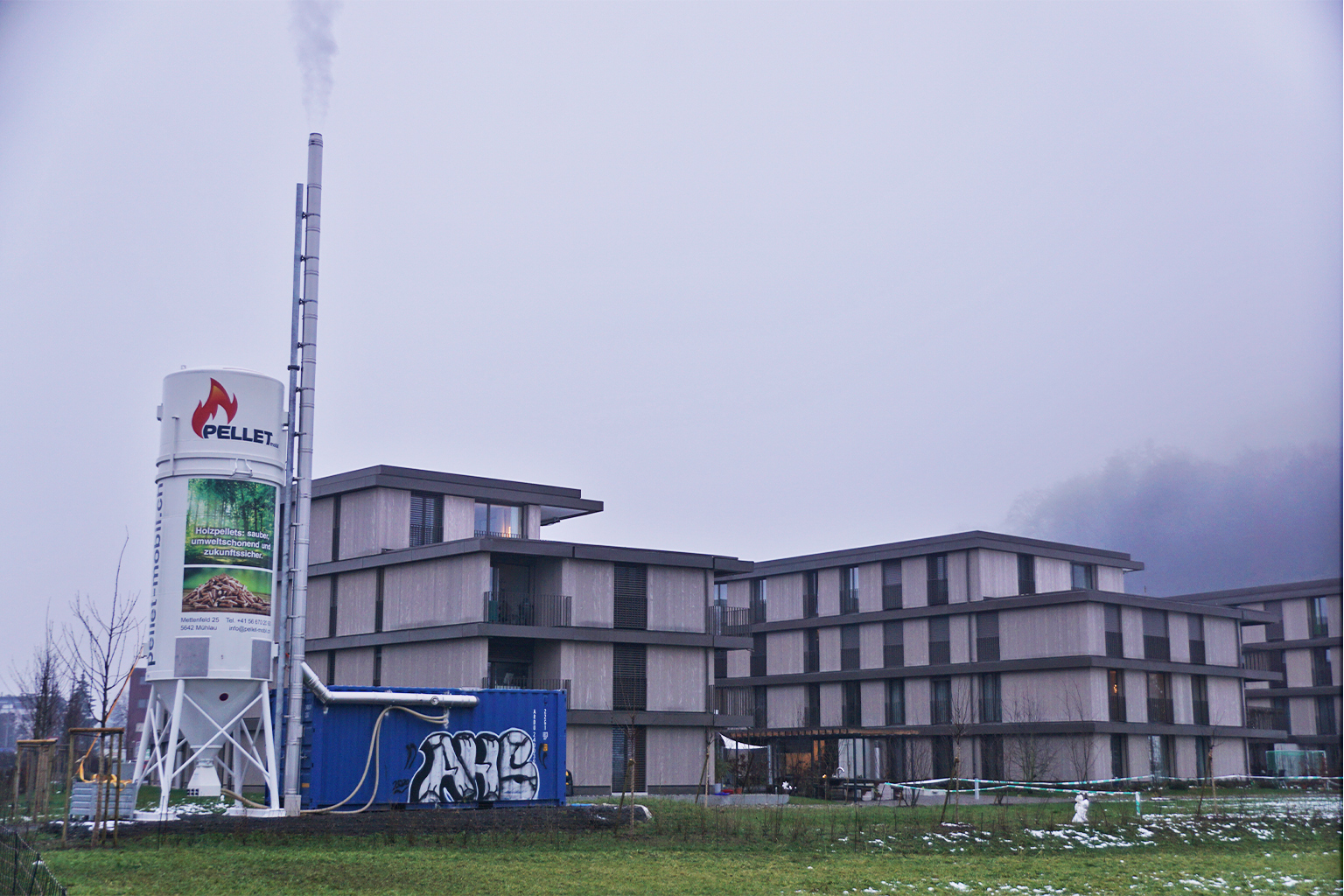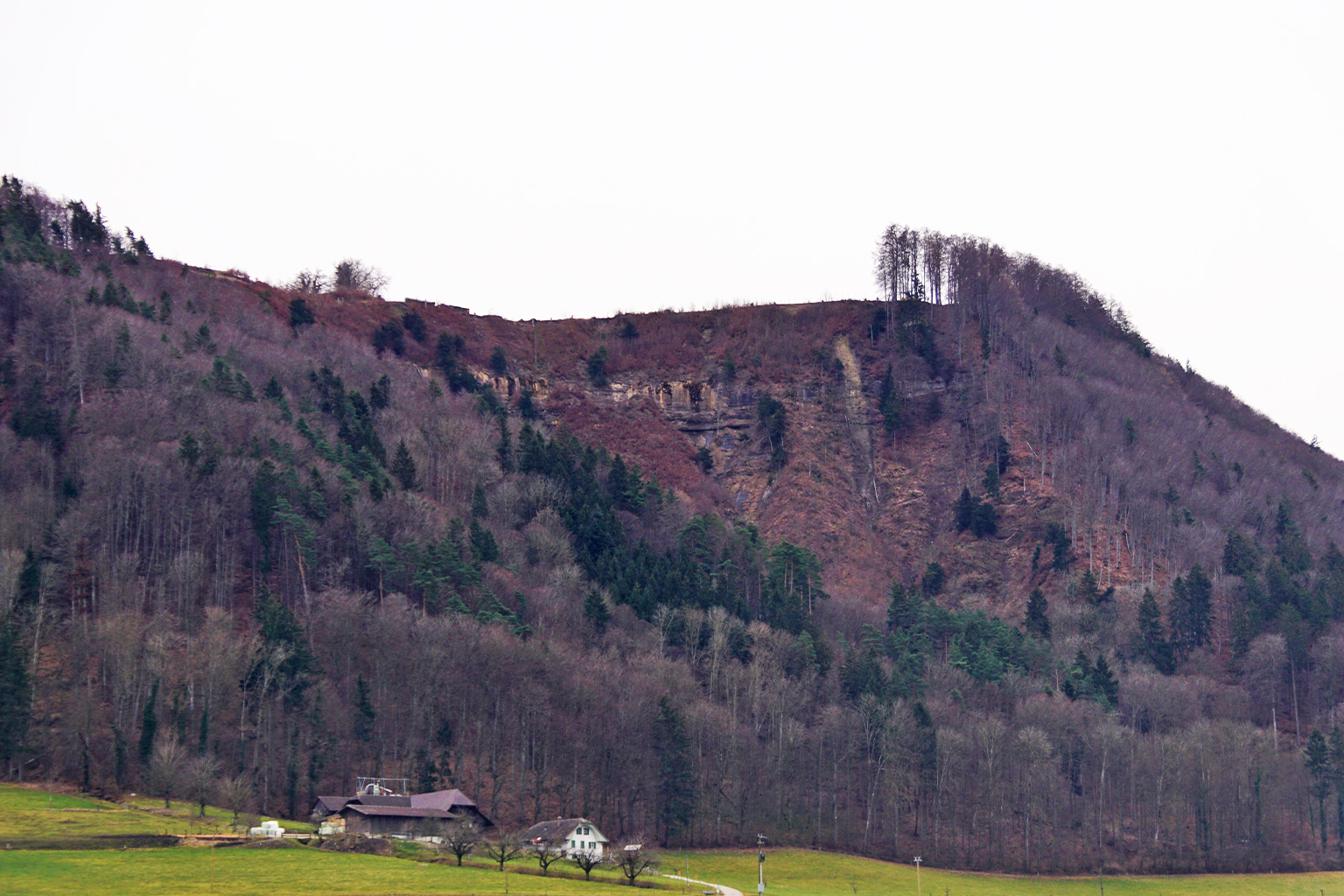- Switzerland has pledged to reach carbon neutrality by 2050, with forest-derived biomass slated to play a growing role in the country’s energy mix, following a motion submitted to parliament in 2019 to fully “exploit the potential of energy wood.”
- That decision came despite warnings from the Federal Office for the Environment noting: “strategies that only increase the use of wood as biofuel are not efficient from a CO2 balance perspective.”
- Wood chips and pellets burned to make energy are one of the few profitable forestry products in an industry that has been losing money since the 1990s to the tune of 40 million francs ($41 million) annually for the past three years alone. Government subsidies also incentivize biomass logging and the downgrading of timber to “waste” wood.
- The autonomy granted to the 26 Swiss cantons means logging rates and practices vary widely across the nation, as do energy policies promoted and adopted. The canton of Bern, where all photos were taken, produces the lion’s share, around one-fifth of all Swiss wood. This post is a commentary. The views expressed are those of the author, not necessarily of Mongabay.
Switzerland had embarked on an energy transition even before Putin’s invasion of Ukraine, but rocketing energy prices have hastened the need to decrease reliance on imported dirty fossil fuels and strengthen self-sufficiency. Policymakers, backed by a triumvirate of larger environmental NGOs, believe forest-derived biomass should be used to offset fossil fuel use.
Woody biomass in the form of logs, pellets, wood chips and waste wood already accounts for 85% of all Swiss biomass, currently the second-most important renewable in the country after hydro. But an eye-opening report co-authored by the Swiss Federal Office of Energy (SFOE) estimates the additional sustainable energy potential of domestic forest wood to be anywhere from 40% to 89% of today’s use. The reasoning is underpinned by the claims that Swiss forests are growing and that harvesting is “near natural.”
Yet logging on the Central Plain, the country’s smallest but most productive forestry region, is already unsustainable, with annual yield (3.283 million cubic meters per year) outstripping growth (2.973 million m3/year). Forests here have shrunk by 3.6% and thinned by 11% in the past 20 years, but the latest 2021 Swiss Statistical Yearbook of Forestry says Switzerland’s overall “wooded area” decreased by some 2,742 hectares (6,776 acres) in 2020 compared to 2019. A further loss of 3,450 hectares (8,525 acres) was recorded by Global Forest Watch in 2021.

The “Alice in Wonderland Syndrome” is a very real affliction characterized by a distortion of perception: Here are five more impossible things which, like Alice, biomass proponents expect the Swiss public to believe, before breakfast, or after. We need not split hares:
Impossibility #1: Only logging “waste” and timber “residues” are used
Pellets and wood chips derive largely from “residues” and “waste” from the timber and logging industries. Or so we are told, but a 2007 report co-authored by the Swiss Federal Institute of Technology Zürich (ETH Zürich) and the federal offices of energy, agriculture and environment concluded such forestry byproducts were already being used for energy production and in the wood industry, thus limiting any market surplus.
The truth is that whole trees and roundwood are increasingly used. But it is not unusual for half the extracted timber to be considered “waste.” Sometimes virtually all of it is.
Impossibility #2: Biomass is clean
Wood smoke is as hazardous to health as tobacco smoke and even so-called eco stoves have been shown to emit 650 times more fine particles, some of them within the home, than a modern HGV truck. Although Swiss laws governing fine particle emissions are more stringent than those of the European Union, they are still twice the World Health Organization’s (WHO) recommended limit of 5 micrograms per cubic meter. Filters are not yet mandatory for 13-to-20-kilowatt (kW) installations found in private Swiss homes.
The country’s 600,000 wood-burning systems also produce 75,000 metric tons of ash annually, which are dumped in landfills where they can cause structural instability, water table and soil contamination, and bioaccumulation of heavy metal(oid)s in food chains.
Large waste-burning plants, which are fed with up to one-third wood in addition to household and industrial waste, churn out an additional 4,000 metric tons of highly noxious ash, which is currently exported to neighboring countries because a law enacted to remove heavy metals has been delayed until 2026.

Impossibility #3: Where there’s smoke, there’s no fire … or CO2
The SFOE classifies “energy from biomass” as “CO2 neutral.” Yet the European Academies’ Science Advisory Council (EASAC), which includes Switzerland, deems it “simplistic” to call forest biomass carbon neutral and renewable because most trees regrow too slowly to offset emissions, and anyway forest carbon stocks should be preserved and increased.
More than 500 international scientists have gone further, warning that the switch from burning fossil fuels to burning wood is a “false solution” that, per unit of heat or electricity produced, adds up to three times more CO2 to the atmosphere.
Impossibility #4: Robust laws protect Swiss trees and forests
The Federal Act on Forest (ForA) whose aim is to “conserve the forest in its area and spatial distribution,” has failed the tattered Central Plain forests. Moreover, Switzerland is one of only two European countries to ban clear-cutting under both the ForA and the Ordinance on Forest (ForO), yet “areas cleared of all trees,” or “gaps” as they are called, are multiplying.
Conveniently, stands razed of all trees aren’t considered clear-cuts if the trees regrow (Article 20.2 in ForO), as they tend to do in a country with a high rate of natural regeneration. They also still count as forest. So do forestry roads and installations despite being clear cases of deforestation, also prohibited (Article 5.1 in ForA), at least on paper…
Lewis Carroll couldn’t have put it better.

Impossibility #5: Money grows on trees
The high investment and operating costs associated with wood-burning systems needed subsidizing, to the tune of some 9.1 million francs ($9.3 million) in 2019. Such generous financial aid combined with aggressive lobbying have helped boost the numbers of domestic wood burners and larger biomass-fueled district heating and industrial power plants. But up too is the price of energy wood, which increased by 8% from 2016 to 2020, while that of wood pellets has rocketed by 67.7% (from 329 to 551.6 francs, or $336 to $562.6, per metric ton) since last July.
There are other hidden costs that the Swiss biomass industry remains tight-lipped about, including the fee for ash disposal, which has almost tripled for some power plants in recent years. But it is the tightening of the Ordinance on Air Pollution Control (OAPC) in line with WHO recommendations that could potentially result in even greater costs to consumers and building owners, and which should serve as a warning to potential investors.
The biomass industry claims it is protecting the planet, not its own interests and profits. This is the deepest rabbit hole of them all.

Let the chips fall
A 2021 study concluded that the best way for Switzerland to become both carbon neutral and energy self-sufficient would be to install combined solar panels and wind turbines high in the Alps, above the winter fog layer. Another option being pursued is heat pumps, which biomass proponents admit “have a much greater potential than energy wood.” Yet those proponents continue to foist their “false solution” on an unsuspecting and well-intentioned public using all the tricks in the Mad Hatter’s hat.
Back in the 1990s, diesel cars were touted as ecological, taxes and incentives were introduced, and sales soared … as did black carbon, nitrogen oxides and particulates. We now know better and diesel vehicles are being phased out, but the same mistake and emissions are being made with woody biomass.
We must stop wasting time and cut carbon, not forests, which are so much more than just a collection of trees.

Banner image: A mobile chipper making short shrift of freshly felled centenary beech trunks to produce wood chips that are burned “green,” with up to 50% moisture, in a local district heating system in February 2022. Image by Lucie Wuethrich.
Lucie Wuethrich began her activism in 2019 when a local beech forest, officially designated as a protection forest to mitigate landslides, was logged and she learned that 95% of the extracted wood was burned as energy wood. Since then she has researched logging and the Swiss forestry industry. She is the sole Swiss-based member of Biofuelwatch and of the Environmental Paper Network’s Biomass Working Group, and has worked closely with environmental NGOs across Europe to raise awareness of the growing pressure on forests.
See related:
How unsustainable is Sweden’s forestry? Very. Q&A with Marcus Westberg and Staffan Widstrand
FEEDBACK: Use this form to send a message to the author of this post. If you want to post a public comment, you can do that at the bottom of the page.
